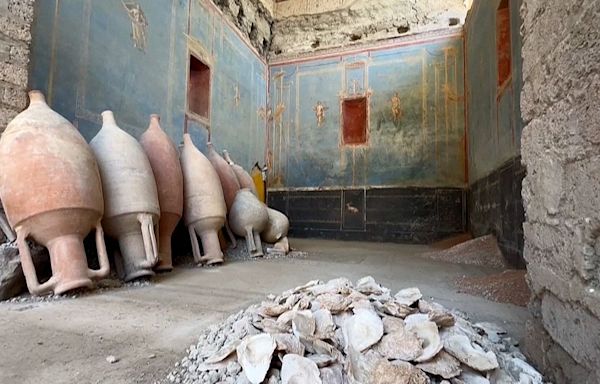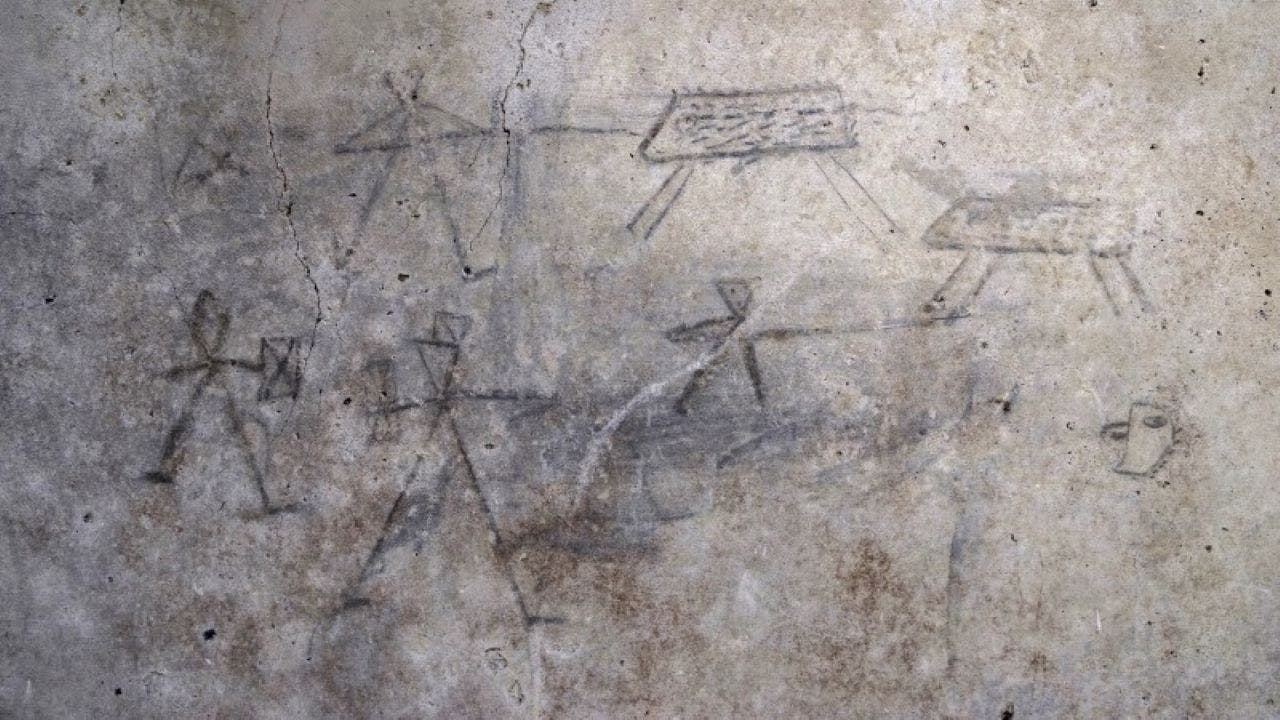Ad
related to: PompeiiBook your Perfect Place to Stay in Pompeii. Quick, Easy Booking. Great Rates.
Search results
News about Pompeii, frescoes, blue room
News about Pompeii, children, Archaeologists
Also in the news
Pompeii is a 2003 Robert Harris novel featuring an account of the aquarius's race to fix the broken aqueduct in the days before the eruption of Vesuvius. Actual events and people inspired the novel. "Pompeii" is a 2013 song by the British band Bastille. The lyrics refer to the city and the eruption of Mount Vesuvius .
- Overview
- History
The city of Pompeii is famous because it was destroyed in 79 CE when a nearby volcano, Mount Vesuvius, erupted, covering it in at least 19 feet (6 metres) of ash and other volcanic debris. The city’s quick burial preserved it for centuries before its ruins were discovered in the late 16th century. The subsequent excavation of Pompeii and the surrounding areas in the mid-18th century marked the start of the modern science of archaeology. The archaeological sites at and around Pompeii are important because they provide a unique source of information about many aspects of social, economic, religious, and political life of the ancient world.
Why was Pompeii destroyed?
Pompeii was destroyed because of the eruption of Mount Vesuvius on August 24, 79 CE. Just after midday on August 24, fragments of ash and other volcanic debris began pouring down on Pompeii, quickly covering the city to a depth of more than 9 feet (3 metres). Pyroclastic material—a fluidized mixture of hot rock fragments, hot gases, and entrapped air moving at high speed in thick dark clouds that hug the ground—reached the city on the morning of August 25 and soon asphyxiated those who had not already been killed. Additional pyroclastic flows and rains of ash followed, adding at least another 9 feet of debris.
pyroclastic flow
Learn more about pyroclastic flow.
Where was Pompeii located?
It seems certain that Pompeii, Herculaneum, and nearby towns were first settled by Oscan-speaking descendants of the Neolithic inhabitants of Campania. Archaeological evidence indicates that the Oscan village of Pompeii, strategically located near the mouth of the Sarnus River, soon came under the influence of the cultured Greeks who had settled across the bay in the 8th century bce. Greek influence was challenged, however, when the Etruscans came into Campania in the 7th century. The Etruscans’ influence remained strong until their sea power was destroyed by King Hieron I of Syracuse in a naval battle off Cumae in 474 bce. A second period of Greek hegemony followed. Then, toward the end of the 5th century, the warlike Samnites, an Italic tribe, conquered Campania, and Pompeii, Herculaneum, and Stabiae became Samnite towns.
Britannica Quiz
History Buff Quiz
Pompeii is first mentioned in history in 310 bce, when, during the Second Samnite War, a Roman fleet landed at the Sarnus port of Pompeii and from there made an unsuccessful attack on the neighbouring city of Nuceria. At the end of the Samnite wars, Campania became a part of the Roman confederation, and the cities became “allies” of Rome. But they were not completely subjugated and Romanized until the time of the Social War. Pompeii joined the Italians in their revolt against Rome in this war and was besieged by the Roman general Lucius Cornelius Sulla in 89 bce. After the war, Pompeii, along with the rest of Italy south of the Po River, received Roman citizenship. However, as a punishment for Pompeii’s part in the war, a colony of Roman veterans was established there under Publius Sulla, the nephew of the Roman general. Latin replaced Oscan as the official language, and the city soon became Romanized in institutions, architecture, and culture.
A riot in the amphitheatre at Pompeii between the Pompeians and the Nucerians, in 59 ce, is reported by the Roman historian Tacitus. An earthquake in 62 ce did great damage in both Pompeii and Herculaneum. The cities had not yet recovered from this catastrophe when final destruction overcame them 17 years later.
Special offer for students! Check out our special academic rate and excel this spring semester!
- Wilhelmina Feemster Jashemski
Aug 27, 2010 · Pompeii and Herculaneum were flourishing resorts on the coast of Italy until Mount Vesuvius erupted in 79 A.D., burying the cities’ ruins under tons of ash and rock.
- Missy Sullivan
- 2 min
Other articles from history.com
Dec 11, 2018 · INFOPOINT: +39 081 8575 347. Open buildings and their opening hours : see the list … read more. From 1st April from 6.00 pm reduced access in some domus. VISIT THE ARCHAEOLOGICAL PARK OF POMPEII SAFELY. Full details regarding access … read more. It is possible to access the sites only with small bags (30x30x15 cm max.)
Mar 21, 2018 · Pompeii was a large Roman town in Campania, Italy which was buried in volcanic ash following the eruption of Mt. Vesuvius in 79 CE. Excavated in the 19th-20th century, its excellent state of preservation gives an invaluable insight into Roman everyday life. Pompeii is perhaps the richest archaeological site in the world for the volume of data ...
- Mark Cartwright
- The number of survivors or deaths after the eruption of Vesuvius over Pompeii in 79 CE is not known. The population of the town has been estimated...
- The volcanic eruption of 79 CE covered Pompeii and there are many skeletal remains. Plaster casts have also been taken of the impressions left by t...
- Pompeii is today a massive archaeological site with significant remains of several thousand buildings. Ruined buildings include villas, baths, an a...
- Pompeii is special because the volcanic eruption of 79 CE preserved the entire town. Buildings, artworks, artefacts, and even human remains all giv...
Nearly 2,000 years ago, Pompeii was a bustling city located in what is now southern Italy. But in the summer of A.D. 79, the nearby Mount Vesuvius volcano erupted. It spewed smoke and toxic gas 20 miles into the air, which soon spread to the town. Almost overnight, Pompeii—and many of its 10,000 residents—vanished under a blanket of ash.
Oct 3, 2019 · Pompeii prospered until it was struck by a massive earthquake in 62 CE, damaging most of its buildings. The fatal blow came upon the city in 79 CE when Mount Vesuvius violently erupted. Follow us on YouTube! Of Pompeii's original 66 hectares, 44 have now been excavated, & excavations are continuing to this day.
People also ask
Is Pompeii a World Heritage Site?
Where is Pompeii located?
What happens in Pompeii?
Why is Pompeii important?



